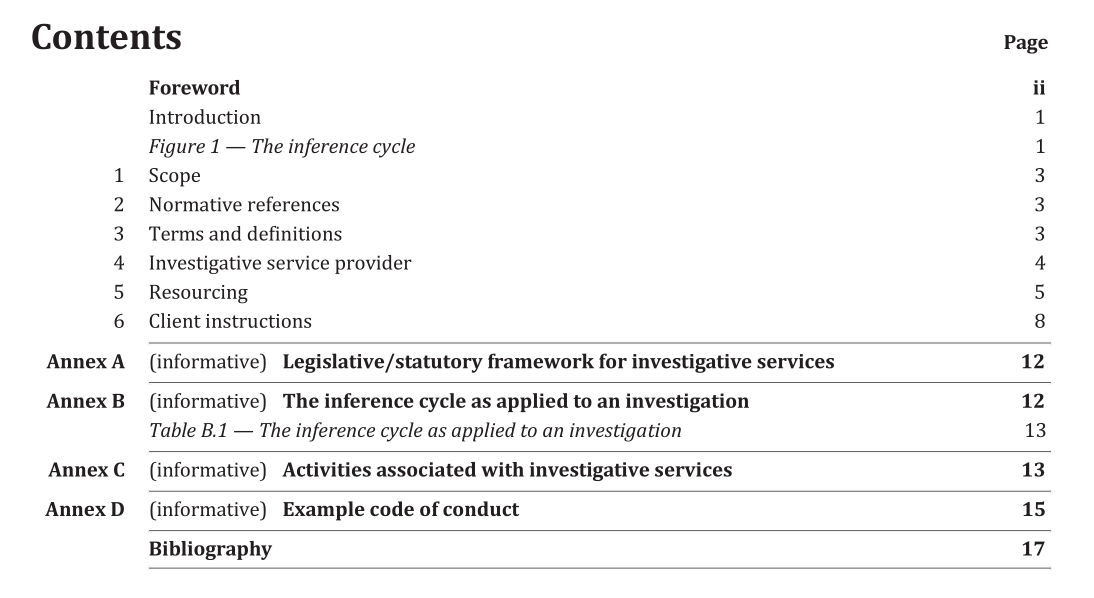BS 102000:2018 pdf download.Code of practice for the provision of investigative services
The inference cycle is a series of stages, as follows.
a) Suspicion – A suspicion, theory, incident, argument or other predicate event occurs that causes an investigation to start. In other words, something happens that causes a person to think an investigation is required. Routinely, this follows a report by the client or informant – that is, something occurs which a client wants investigated. The term “suspicion” includes actual incidents, and is used because it relates to those incidents which need investigation because the causes, consequences or responsibilities are not clear from the outset.
b) Hypothesis – The inference cycle recognizes that in every case, an investigator begins to theorize as to what has happened and/or some other facts need investigation. This is not an obstruction to an objective investigation, merely an acknowledged fact. A hypothesis is not a conclusion – it is an initial assessment. For example, if an investigator walks into a room and sees a body wrapped in carpet with a knife in its back, the hypothesis is that a murder has taken place, no more. By inference, the hypothesis that this event is a murder means a murderer exists, but it does not identify a murderer. Very often, an early theory is proved to be correct but the following actions dig deeper into that initial hypothesis and might even change it. Application of the inference cycle either supports that theory, or proves it to be incorrect. But the hypothesis directs initial,essential investigatory practice – in this case, the establishment of a murder team, the instigation of scene preservation and localized enquiries. An alternative example is an accident in the workplace. The accident occurs, and attendance at the scene identifies a ladder on the floor, a scrape mark leading from the ladder to a pool of spilled oil, and broken materials at the victim’s point of landing. The hypothesis is that the ladder was placed in a pool of oil, but whether this is true, who spilled the oil, who placed the ladder and other elements have still to be investigated. The hypothesis merely identifies potential lines of enquiry, but each line might provide new hypotheses. A final example could be that in the light of requirements of insurers or as a result of good business practice (which, for example, is itself the result of negative experience with fraud) a company conducts due diligence investigations.
BS 102000:2018 pdf download
